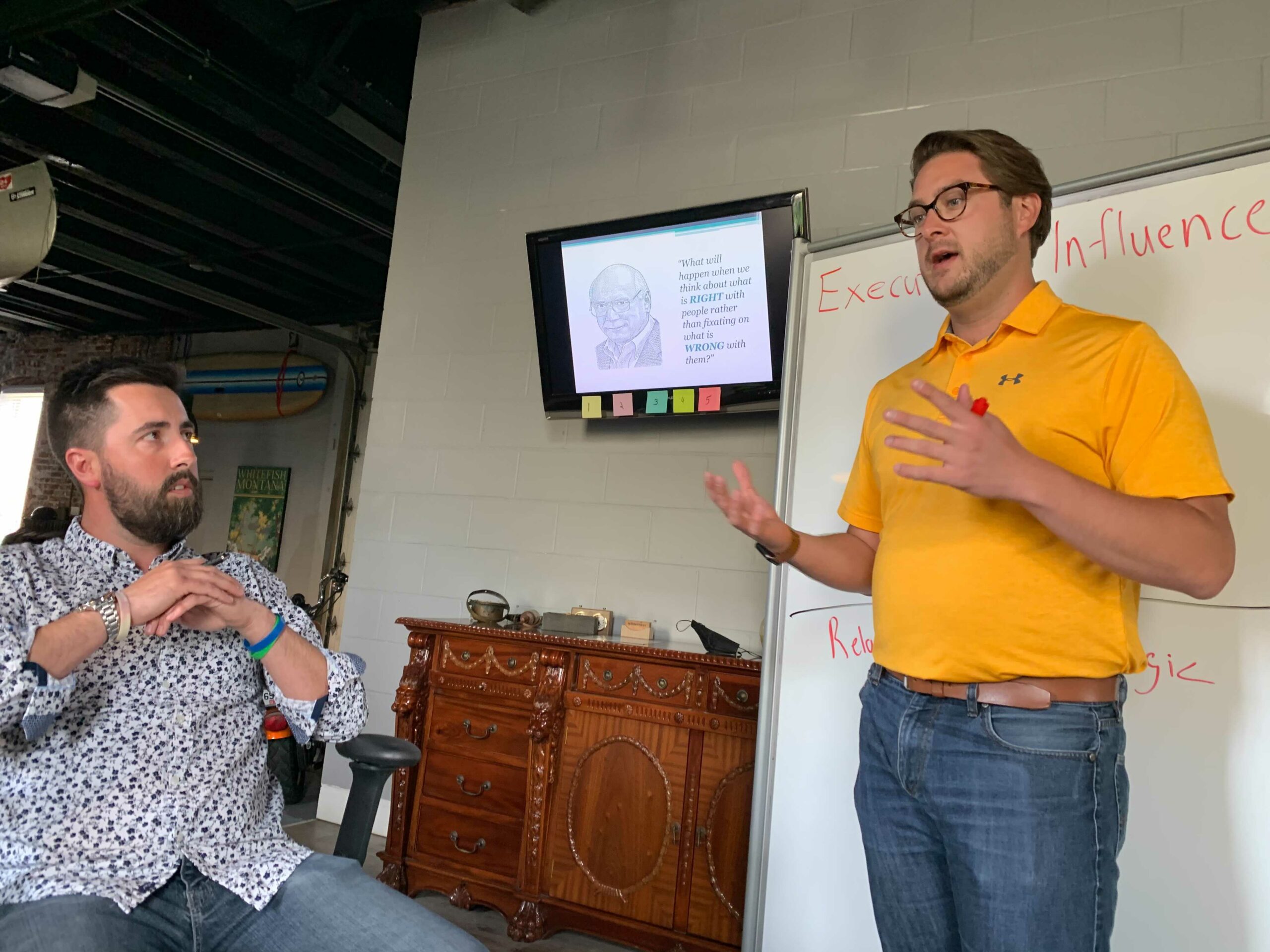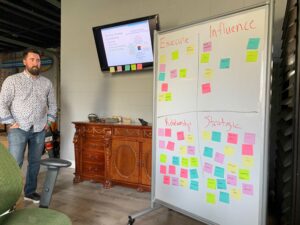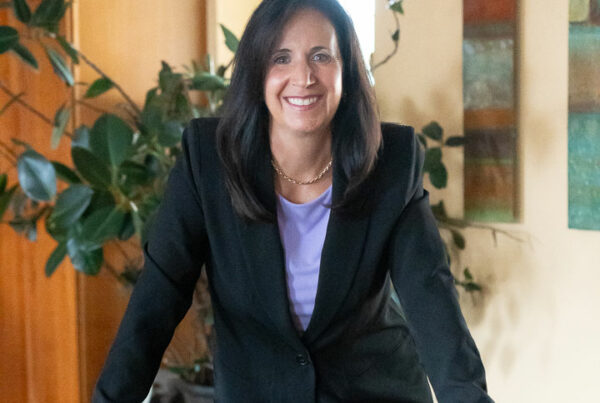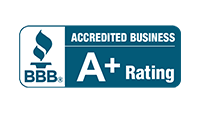
Read StrengthFinders Part I to learn more about this exercise.
Our team individually took the Clifton StrengthFinders test and came together to compare the results. The similarities stood out greatly, and a few characteristics were unique to the individual.
Strengths that stood out: Strategic, Adaptability, Input, Positivity, Relator.
Strengths that were rare: Woo, Deliberative, Arranger.
Consultant Nick Warrington explained that oftentimes what we feel are weaknesses are often our greatest strengths. We simply shine a negative light on them rather than utilizing them to their full potential.
Many of us were also surprised by some of our top five strengths. Warrington noted that tests like these often reveal talents that we hide from ourselves. Let’s dive deeper into how we used the CliftonStrengths test to bolster and grow our team’s abilities.
Benefits of Knowing Individual Strengths
It’s helpful to understand more about yourself and your colleagues for a number of reasons:
- Better workforce retention rates
- Improved efficiency & productivity
- Stronger, closer teams
- Improved client relations
- Higher job satisfaction when the team works with combined strategy and empathy
- Higher profits for the business
- Improved strategy for hiring new employees
- Improved vision for job seekers
“From the cradle to the cubicle, we devote more time to our shortcomings than to our strengths.” – Tom Rath
How Employers Can Use StrengthsFinder
For leaders, knowing the individual strengths of your team can make assignments simpler and more effective. For example, it’s best to give a new creative project to an Activator to concretely launch rather than a Futuristic thinker.
Leaders have the great opportunity to nurture their teams’ budding strengths, and this will grow employees’ trust and respect in turn. Employees will feel understood and greater satisfaction within their position.
Additionally, employers will have a realistic view of the areas where the employee will likely underperform or need additional support and training. For those unexpected tasks that appear, a team leader can quickly identify who the best employee for the job would be based on their strengths.
How Teams Can Use StrengthsFinder
Team members should know their own strengths as well as the strengths of their colleagues. This will improve collaboration through a greater understanding of your coworkers. Everyone will find it easier to work together, even if they don’t share the same strengths. The team will understand how each member can contribute to their highest potential, as well as what shouldn’t be expected of them.
Overall, every person on the team can do what they’re best at instead of trying to meet unrealistic expectations.
Why Weaknesses Aren’t Included
Weaknesses are intentionally left out. Clifton and Rath have a few reasons for leaving weaknesses out of the equation:
- Developing your strength is more positively engaging – and successful – than trying to improve your weaknesses.
- Knowing your strengths makes it easier to choose a course of action because you can deliberarelt choose not to use your weaknesses.
- You’re less likely to feel frustrated and like an under-achiever.
The idea is that focusing on strengths has the side effect of managing weaknesses. As strengths develop and become the go-to strategy for dealing with anything, weaknesses fade into the background.
“The key to human development is building on who you already are.” – Tom Rath





